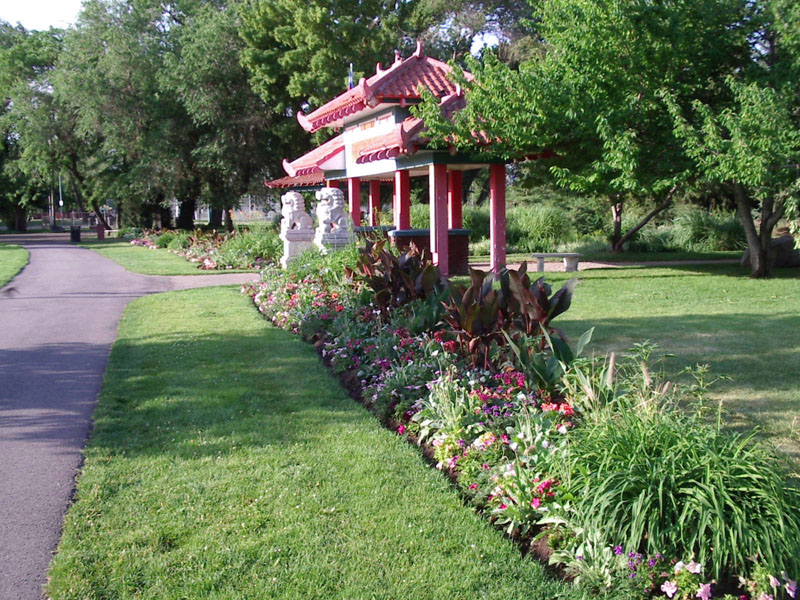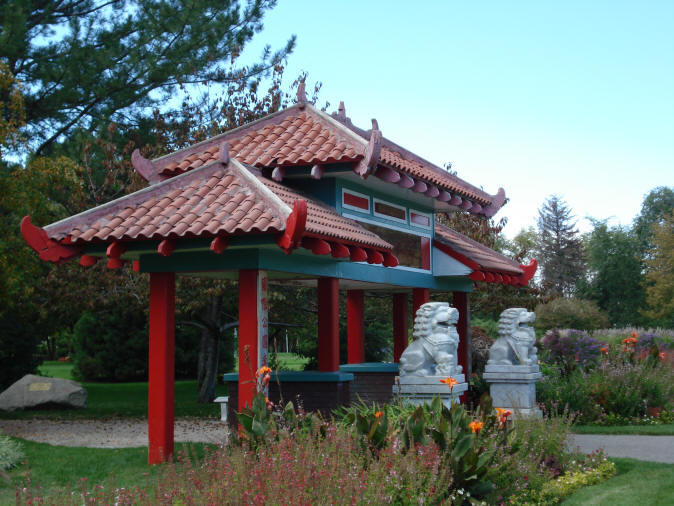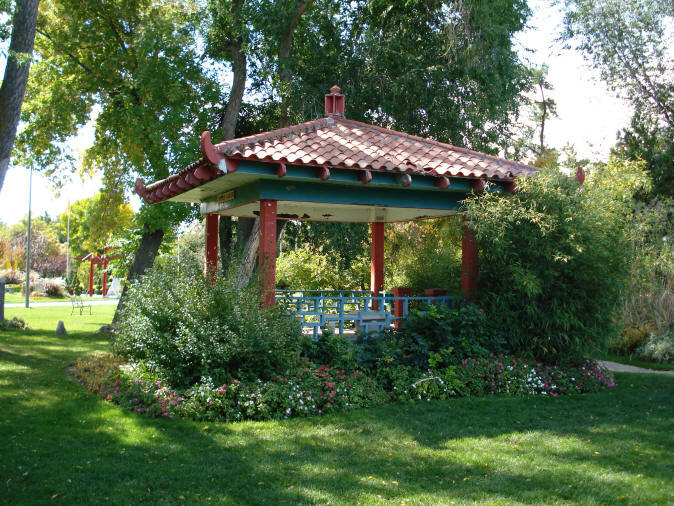The artwork is located in the garden representing China at the International Peace Gardens.
The garden was dedicated in 1959 and features pagodas, graceful bridges and painting. The guests experienced first hand the theory of the Chinese garden, “Each step a different view,” as they meandered over the bridge and entered the Chinese Pavilion.
The Pavilion ramp faces the Jordan River, whose banks are well dotted with bamboo, pines, lotuses, and water lilies. There are weeping willows, mulberries, flowering plums and peaches, as well as many roses, begonias, chrysanthemums and other flowers. There are also rare imported magnolia trees and citrus shrubs, gifts from the Chinese Freemasons president from San Francisco, California.
The magnolia have long been an emblem of peace in China and planted in the Peace Garden, the donors trust they will ever remind Americans of the friendship of Chinese loyal to the Republicans cause.
William Louie, an architecture student from the University of Utah, was the designer of the garden. In true high minded fashion, the entrance to the thirty foot gateway of wood and concrete with Chinese style roof tiling was graced with a wooden sign engraved in Chinese with the words “Peace Garden” in the calligraphic hand of Dr. Wellington Koo, the former Chinese Ambassador to the United States. A couplet on either side of the gate read: “China and the West harmonious live beneath auspicious clouds; Joyous emanations permeate the International Peace Gardens.”
The two large lion statues at the entryway were dedicated in 1979.
Artwork featured in header: Through the Safety Lens by Alexander Tylevich




